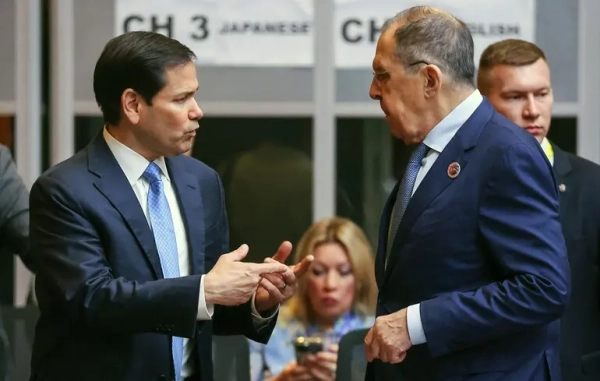
Meritocracy is such an intuitive concept that defining it feels redundant. It is the idea that social and economic rewards should track talent, effort, and achievement. Spots at the most prestigious educational institutions should go to the smartest kids; positions at the highest-paying firms should be given to the most-skilled workers. While the term “meritocracy” was first coined just over 60 years ago, it has become so deeply ingrained into our collective ethos that it is hard to imagine a just society organized any other way.
It is not surprising, then, that most criticism of meritocracy is made by those who accept its basic principles. Earlier this year, the story broke of a far-reaching college admissions scandal involving at least 50 super-rich parents who essentially bribed their children’s way into elite colleges and universities. In a rare moment of national bipartisanship, voices from across the political spectrum reacted in outrage to this revelation.
The incident was a reminder that even the most critical commentary often focuses on the fact that our so-called meritocracy is not quite meritocratic enough; entrance into the ranks of the elite is still rigged in favor of the wealthy and privileged at the expense of the most intelligent and hardest working.
This is what we can think of as the aspirational critique of meritocracy. It posits that the problem with our current system isn’t the ideal of meritocracy itself but our collective failure to live up to that ideal. If only we could replace the forces of aristocracy, oligarchy, and corruption with a genuine meritocracy, then we would have a just and equal society.
There is also a principled critique of meritocracy, although it is far less common. Principled critics argue that any society where socioeconomic reward is based on the principle of “merit” itself is inherently unjust. For them, the ideal of meritocracy is flawed and must be replaced either by radical egalitarianism or a return to aristocracy.
Aspirational critics tend to dominate the meritocracy debate. Clear violations of meritocratic principles evoke bipartisan public backlash. Attempts to make the meritocratic ladder more fair and accessible — such as need-blind admission policies and nondiscriminatory hiring practices — are commonplace. The “American Dream” is itself a meritocratic notion of rising from rags to riches on hard work and talent alone.
This is what makes Daniel Markovits’s new book The Meritocracy Trap so fascinating. At its core, The Meritocracy Trap is a comprehensive — and rather scathing — critique of the aspirational view. Markovits argues that meritocracy itself is the problem: It produces radical inequality, stifles social mobility, and makes everyone — including the apparent winners — miserable. These are not symptoms of systemic malfunction; they are the products of a system that is working exactly as it is supposed to.
At the same time, Markovits refuses to reject meritocracy altogether. He instead offers a vision for completely reimagining it.
Meritocracy is the new face of inequality
Aspirational critics tend to believe that rising inequality since the 1970s is the product of insufficient meritocracy. Some argue that the American elite is functionally an old-fashioned aristocracy that owes its income to nepotism and opportunism. Others argue that the elite is functionally an oligarchy that owes its rising income to a shift away from labor and toward capital. According to this view, elites don’t even need nepotism — they are using preexisting wealth and inheritance to rebuild an old-fashioned feudal class.
Markovits’s analysis leads him to the opposite conclusion: Rising inequality is the product of meritocracy itself.
At midcentury, the super-rich really were a mix of oligarchs and aristocrats. In the 1950s and ’60s, the richest 1 percent of earners received around three-quarters of their income from capital. Sociologist Thorstein Veblen called elites at the time a “leisure class” because they rarely worked and instead spent their days mastering nonproductive tasks as social signifiers of their wealth. Those who did work, for instance, as managers, partners at law firms, and bankers, worked relatively few hours. All the while, ordinary working people toiled for long, strenuous hours just to make a decent living.
This is no longer the case. As Markovits explained in an interview with Vox’s Ezra Klein:
This isn’t an exaggeration. A Harvard Business Review survey found that 62 percent of high-earning individuals work over 50 hours a week, more than a third work over 60 hours a week, and one in 10 work over 80 hours a week. According to Markovits, elites today work an average of 12 more hours per week than middle-class workers (the equivalent of 1.5 additional workdays).
The rich are also more skilled than ever. Students from the top 1 percent of households overwhelmingly dominate elite colleges and universities, despite the fact that bribery and nepotism are much less the norm.
The rich today are no longer an indolent “leisure class” but what Markovits calls a “superordinate” working class: they work harder, longer, and perform more high-skilled work than ever before. As a result, Markovits calculates that three-quarters of elite income now originates from labor rather than inherited capital.
A foundational assumption of the aspirational critique is that a more fully meritocratic society is also a more equal one. But Markovits’s analysis leads to the opposite conclusion: Skyrocketing inequality has taken place on meritocracy’s own terms.
When meritocracy wins, everybody loses
This leads us to Markovits’s second critique of the aspirational view: The cycle that produces meritocratic inequality severely harms not only the middle class but the very elite who seem to benefit most from it.
Meritocratic inequality works like this: First, elite workers acquire super-skilled jobs, displacing middle-class labor from the center of economic production. Then, those elite workers use their massive incomes to monopolize elite education for their children, ensuring that their offspring are more qualified to dominate high-skilled industries than their middle-class counterparts. The cycle continues, generating what Markovits calls “snowball inequality”: a compounding feedback loop that amplifies economic inequality, dramatically suppresses social mobility, and creates a “time divide” between an elite class whose members work longer and longer (due to a higher demand for their talents) and an increasingly idle middle class (whose work has been made redundant).
The most obvious victim of this cycle is the middle class. Forced idleness excludes the middle class from a feeling of social usefulness. Stagnating wages and rising debt levels exclude the middle class from socioeconomic prosperity. Diminishing social mobility excludes the middle class from the hope of achieving the American Dream.
At the same time that meritocratic inequality excludes the middle class, meritocratic ideology convinces the middle class that this situation is their own fault. “The meritocracy trap,” writes Markovits, “imprisons the imagination, casting economic exclusion as an individual failure to measure up.”
The impact of this exclusion itself is impossible to measure, but increasing meritocratic inequality has coincided with the opioid epidemic, a sharp increase in “deaths of despair,” and an unprecedented fall in life expectancy concentrated in poor and middle-class communities.
Meritocracy harms the elite as well. Life for the meritocratic elite is dominated by work. Substantial numbers of elites report that their work interferes with their health, prevents them from forming strong relationships with their children, gets in the way of good relationships with their spouses, and even makes it harder to have a satisfying sex life.
Most perniciously, meritocracy turns life for the elite into an endless competition. The meritocratic race begins in early childhood (the most competitive preschools admit fewer than 10 percent of applicants), continues into the teenage years (college admissions are more competitive than ever) and then extends into the workplace (elite workplaces employ “up or out” promotion policies to cull underperformers and separate workers of the same rank into performance-based tiers).
In order to win this competition, elites are forced to exploit their own talents and abilities. They spend their lives acquiring the degrees, skills, attitudes, and habits (i.e. “human capital”) that makes them valuable to elite educational institutions and employers. In doing so, elites, Markovits writes, transform themselves into “asset manager[s] whose portfolio contains [their] own persons.” This process damages the very identity of its participants.
In short, elites are shuttled into a life-long, endless competition that not only consumes their life quantitatively but qualitatively as well, leaving no room for self-expression, actualization, or discovery — only self-exploitation, value extraction, and endless anxiety.
Worse yet, the same habits, values, attitudes, and skills that make elites so valuable in school and at work damage life outside of those institutions. Klein and Markovits discuss this in their interview:
Ezra Klein
Daniel Markovits
As a former management consultant, I couldn’t help but resonate with these words. Over the course of just a year, I watched my close personal relationships, my mental health, and my self-worth crumble under the weight of 16-hour days, a hyper-competitive payscale, and a never-off-the-clock mentality.
Along with Markovits, I will happily concede that the elite are “no objects of sympathy.” But while life at the top might be materially glamorous, it can also be a spiritual and psychological nightmare that leaves no part of one’s existence unscathed. When Markovits writes that meritocracy “fundamentally remakes elite life,” he means it in the most dystopian sense.
This is the fundamental flaw of the aspirational critique. It assumes that a meritocracy that genuinely rewards the best and the brightest will leave everyone better off. That couldn’t be further from the truth: When meritocracy is realized, misery abounds.
Down with the meritocracy?
Clearly, Markovits is no fan of the meritocracy, though he isn’t willing to go so far as to reject it outright. At one point in their conversation, Klein asks whether there is some version of the meritocracy that Markovits would accept or if the very notion of merit-based competition needs to be thrown out altogether. Markovits’s response is telling.
What Markovits is striving for is not an aspirational affirmation of the meritocratic ideal nor a principled rejection of merit, but a rethinking of meritocracy’s own standard of success. When we think of meritocracy, we tend to think of “the best and the brightest” being rewarded, but Markovits wants to introduce a new version of meritocracy where being “the best” is far less important than being simply “good enough.”
In other words, Markovits wants to move us away from a polarized meritocracy — one characterized by a massive skill-and-reward gap between elite workers and other workers — to a compressed meritocracy defined by broad, shared prosperity between mid-skilled workers. As Markovits describes to Klein:
The idea behind a compressed meritocracy is simple: to open meritocracy’s gates to a broader portion of the population and, in doing so, make life within those gates more palatable. A more egalitarian distribution of working hours, incomes, and social esteem would not only give dignity to the middle class but diminish the heavy burden on elites. A more open and inclusive higher education system would not only increase social mobility for the middle class but reduce the hypercompetitive pressures that dominate elite life. A more egalitarian meritocracy would be a better meritocracy for all.
Markovits’s modest policy recommendations for compressing American meritocracy fall well short of a comprehensive agenda. But the value of The Meritocracy Trap is not to give us a roadmap out of our current circumstances; it is to allow us to see our current situation for what it really is. For better or worse, meritocracy is the water all of us swim in. We implicitly accept its values, practices, arguments, and assumptions because they govern our everyday lives. This book is an opportunity for all of us to step out of the water and perhaps conclude that the meritocracy we have built is failing us.
At the same time, The Meritocracy Trap reminds us that we need not throw away the notion of meritocracy altogether. To build a world that is simultaneously democratic, egalitarian, and meritocratic may be a difficult task, but not an impossible one.
[You can listen to Markovits and Klein’s whole conversation here.]
[You can read Sean Illing’s Vox interview with Daniel Markovits here.]
Sourse: vox.com






